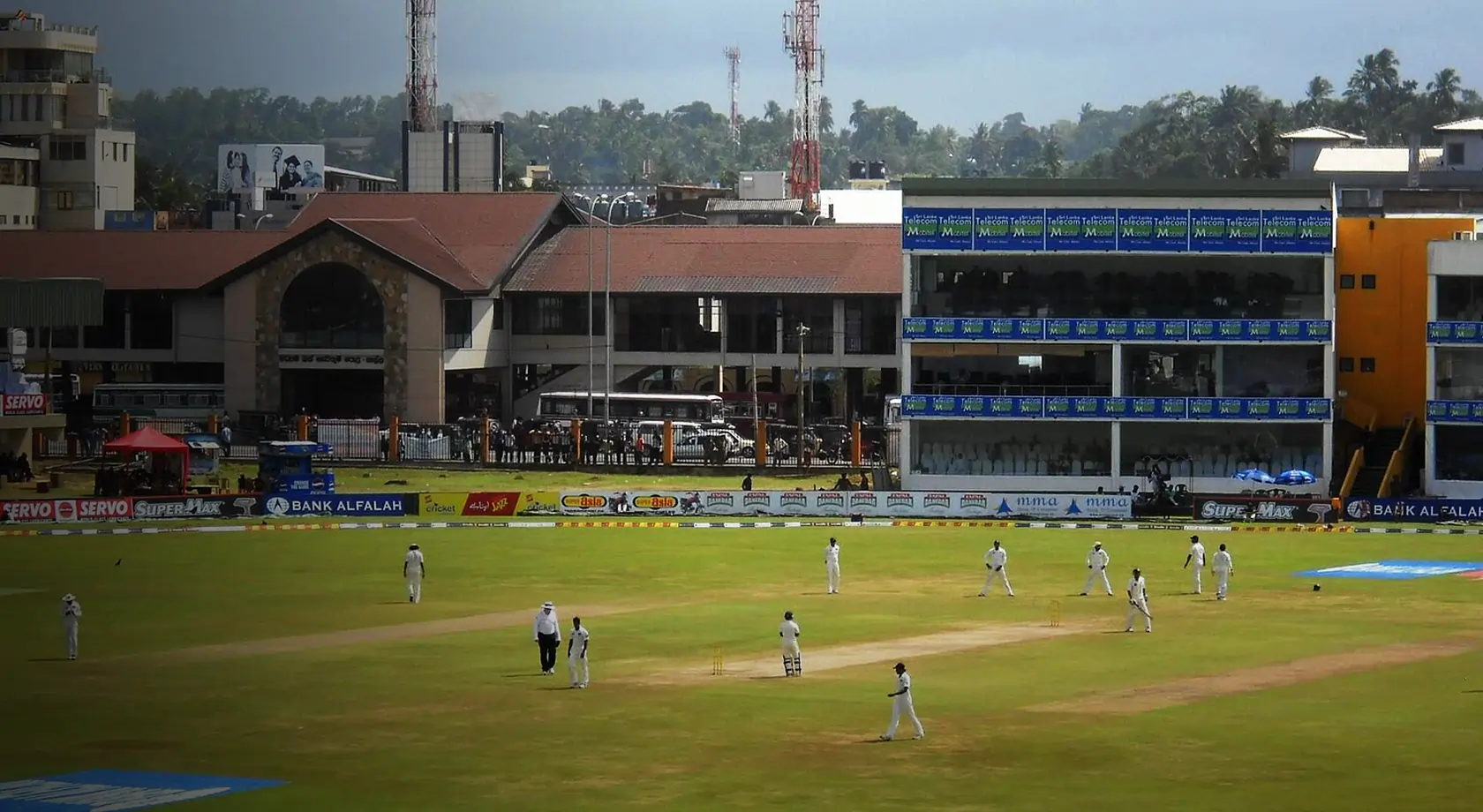Quick facts
| Stadium Name | Galle International Cricket Stadium |
| Place, Country | Galle, Sri Lanka |
| Established | 1876 |
| Seating Capacity | 35,000 |
Upcoming Matches
See allNo upcoming or live matches for this venue.
Galle International Stadium in Sri Lanka is regarded as one of the most beautiful grounds in the world. The nearby ocean and Galle Fort gives games here a highly picturesque look and feel.
Our OCB guide to the Galle International Stadium tells you all you need to know, so read on.
Despite Galle International Stadium being one of the main cricket grounds in Sri Lanka, it is not often used for Twenty20 matches, with Tests and ODIs more likely to be played here.
Galle International Stadium's history dates back nearly 150 years, so it is one of the oldest cricket grounds on the planet, with its current capacity sitting at around the 35,000 mark.
Having been badly affected by a tsunami resulting from the Indian Ocean earthquake in 2004, it took years to get it ready to host top-level cricket matches again.
Now, it is a firm fixture on the Test circuit and is notable for being the venue of the last match played by Sri Lanka spin king Muttiah Muralitharan, who also reached 800 wickets on the day.
Murali and Australian icon Shane Warne have since been recognised by a special legacy board.

Sri Lanka vs Pakistan test match.JPG - Photo by Shehanw, via Wikimedia Commons, licensed under CC BY-SA 3.0.
Galle International Stadium Pitch Report
Galle is known for being a very spin-friendly wicket, with the Galle International Stadium pitch report typically being strongly in favour of slow bowlers who can turn the ball.
It is worth noting that Galle International Stadium pitch has sometimes been controversial. In 2018, it was the subject of an investigation by major news network Al Jazeera, which produced a documentary that suggested that groundsmen had deliberately altered the nature of the pitch.
Galle rarely hosts T20s, but results from Tests and ODIs played at this ground can give an indication as to the pitch report. In both 2023 and 2024, the average first innings score in Tests played at Galle was over 450, so it can be a good track to bat on.
Batting last at Galle can be a challenge due to the way the pitch takes spin, with Sri Lankan teams often packed with slow bowlers as a result.
In Tests, only 40.9% of matches played at Galle have been won by the team batting second so winning the toss can be a big advantage.
FAQs
Galle does not have much of a record when it comes to hosting T20s, but in Tests here over 2023 and 2024 the average first innings score recorded was over 450.
Galle is known for its spin-friendly pitch, with captains browsing the Galle International Stadium pitch report normally picking plenty of slow bowlers as a result.
Galle is known for hot temperatures that can make batting testing, while the ground is often windy due to its location close to the Indian Ocean.
Batting first is normally a big advantage in games played here. The pitch tends to show a turning wicket for spinners.